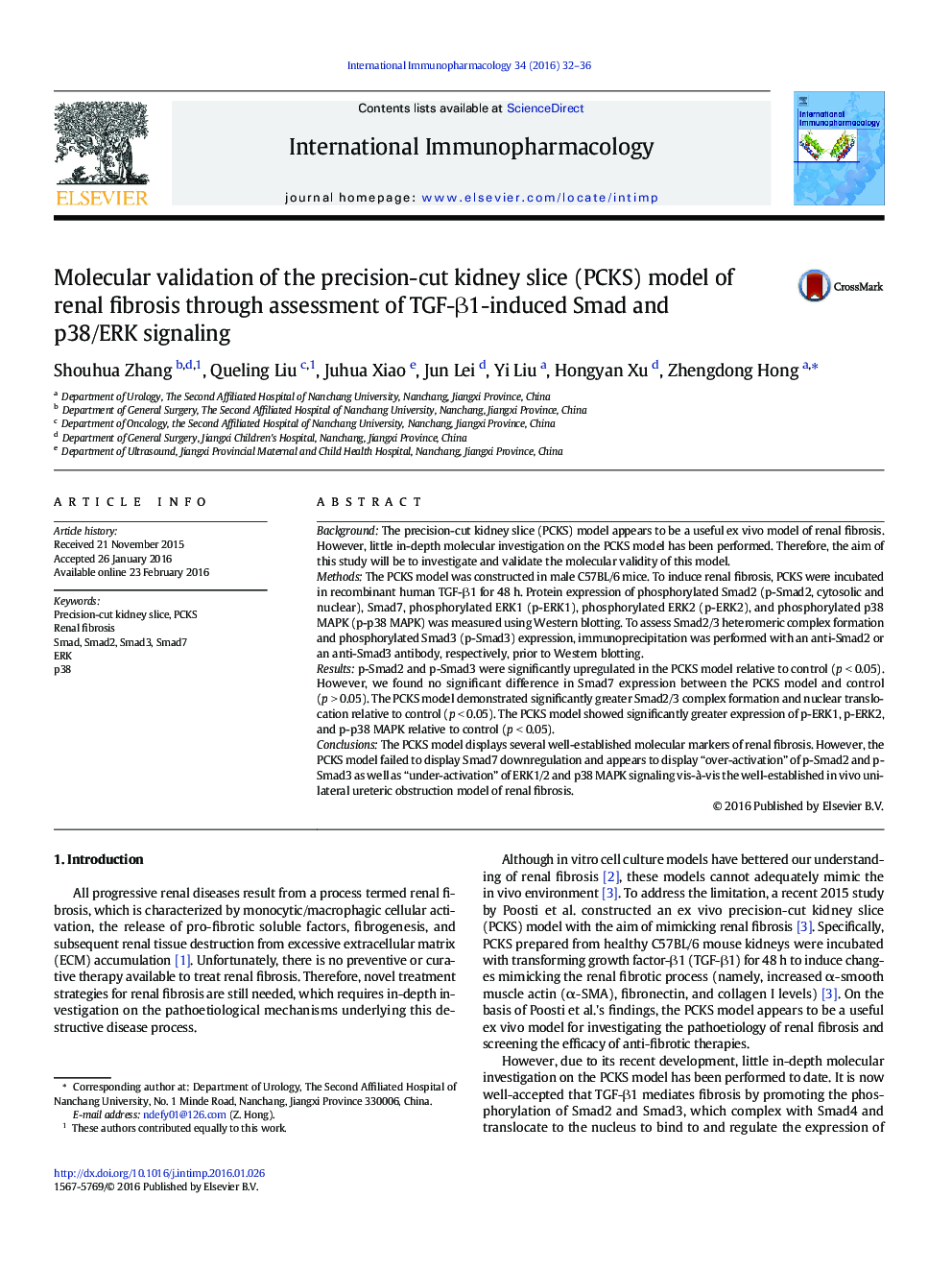| کد مقاله | کد نشریه | سال انتشار | مقاله انگلیسی | نسخه تمام متن |
|---|---|---|---|---|
| 2540257 | 1559756 | 2016 | 5 صفحه PDF | دانلود رایگان |

• This study investigated the molecular validity of the precision-cut kidney slice (PCKS) model.
• The PCKS model demonstrated significant p-Smad2 and p-Smad3 upregulation relative to control.
• The model showed higher Smad2/3 complex formation and nuclear translocation relative to control.
• The model showed significant p-ERK1, p-ERK2, and p-p38 MAPK upregulation relative to control.
• The PCKS model displays several well-established molecular markers of renal fibrosis.
BackgroundThe precision-cut kidney slice (PCKS) model appears to be a useful ex vivo model of renal fibrosis. However, little in-depth molecular investigation on the PCKS model has been performed. Therefore, the aim of this study will be to investigate and validate the molecular validity of this model.MethodsThe PCKS model was constructed in male C57BL/6 mice. To induce renal fibrosis, PCKS were incubated in recombinant human TGF-β1 for 48 h. Protein expression of phosphorylated Smad2 (p-Smad2, cytosolic and nuclear), Smad7, phosphorylated ERK1 (p-ERK1), phosphorylated ERK2 (p-ERK2), and phosphorylated p38 MAPK (p-p38 MAPK) was measured using Western blotting. To assess Smad2/3 heteromeric complex formation and phosphorylated Smad3 (p-Smad3) expression, immunoprecipitation was performed with an anti-Smad2 or an anti-Smad3 antibody, respectively, prior to Western blotting.Resultsp-Smad2 and p-Smad3 were significantly upregulated in the PCKS model relative to control (p < 0.05). However, we found no significant difference in Smad7 expression between the PCKS model and control (p > 0.05). The PCKS model demonstrated significantly greater Smad2/3 complex formation and nuclear translocation relative to control (p < 0.05). The PCKS model showed significantly greater expression of p-ERK1, p-ERK2, and p-p38 MAPK relative to control (p < 0.05).ConclusionsThe PCKS model displays several well-established molecular markers of renal fibrosis. However, the PCKS model failed to display Smad7 downregulation and appears to display “over-activation” of p-Smad2 and p-Smad3 as well as “under-activation” of ERK1/2 and p38 MAPK signaling vis-à-vis the well-established in vivo unilateral ureteric obstruction model of renal fibrosis.
Journal: International Immunopharmacology - Volume 34, May 2016, Pages 32–36